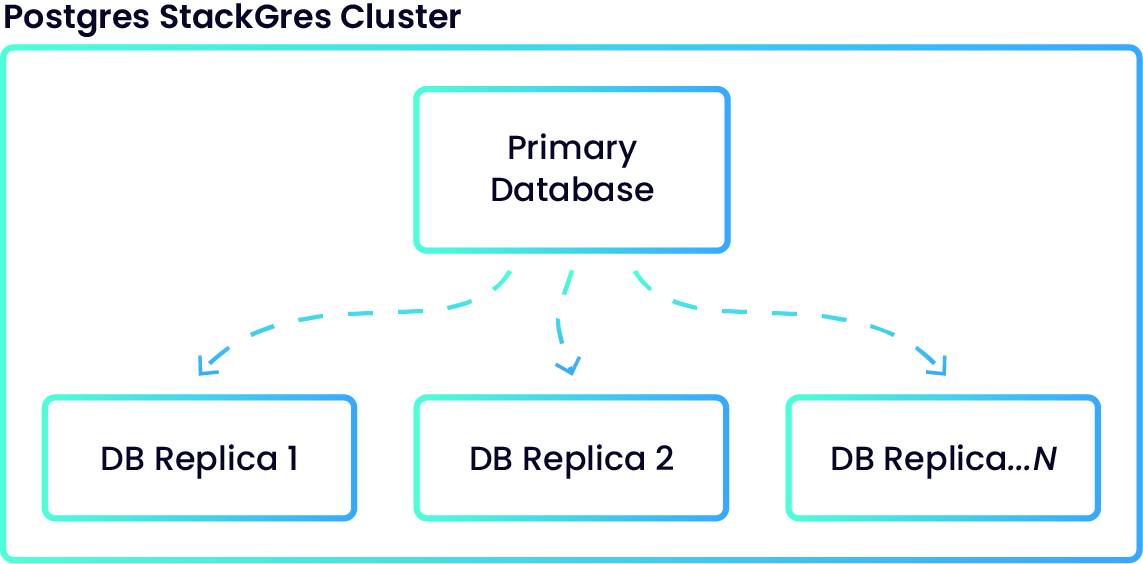High Availability
A StackGres cluster has a full high-availability PostgreSQL configuration managed by Patroni.

The replicas correspond to pods in the StackGres cluster, and can be listed using kubectl:
kubectl get pods -n default -l app=StackGresCluster,stackgres.io/cluster=true
Note: Change
-nparam to point to your namespace, in this example we use default.
And we’ll get an output like:
NAME READY STATUS RESTARTS AGE
stackgres-0 5/5 Running 0 163m
stackgres-1 5/5 Running 0 163m
stackgres-2 5/5 Running 0 162m
Identifying the Master and Replica Nodes
One of the most important task is to be able to identify which node is the current primary and which ones the replica nodes.
There are two different ways to accomplish this. The first one is with the kubectl command using the pod labels:
To identify the primary node:
$ kubectl get pods -n default -l app=StackGresCluster -l role=master
NAME READY STATUS RESTARTS AGE
stackgres-0 5/5 Running 0 165m
To identify the replica nodes:
$ kubectl get pods -n default -l app=StackGresCluster,stackgres.io/cluster=true -l role=replica
NAME READY STATUS RESTARTS AGE
stackgres-1 5/5 Running 0 165m
stackgres-2 5/5 Running 0 165m
The other way is to use the own Patroni commands. But first we need to connect to the Patroni container:
kubectl exec -it stackgres-0 -c patroni -- bash
Once you are connected to it run the Patroni command:
$ patronictl list
+-----------+-------------+------------------+--------+---------+----+-----------+
| Cluster | Member | Host | Role | State | TL | Lag in MB |
+-----------+-------------+------------------+--------+---------+----+-----------+
| stackgres | stackgres-0 | 10.244.0.11:5433 | Leader | running | 2 | |
| stackgres | stackgres-1 | 10.244.0.12:5433 | | running | 2 | 0.0 |
| stackgres | stackgres-2 | 10.244.0.13:5433 | | running | 2 | 0.0 |
+-----------+-------------+------------------+--------+---------+----+-----------+
As you can see we get the cluster status from a Patroni node. We can retrieve some valuable information here:
- Who is the primary node
- Who are the replica nodes
- The IP address and port
- The state of each node
- The lag in MB in case some nodes are not up-to-date